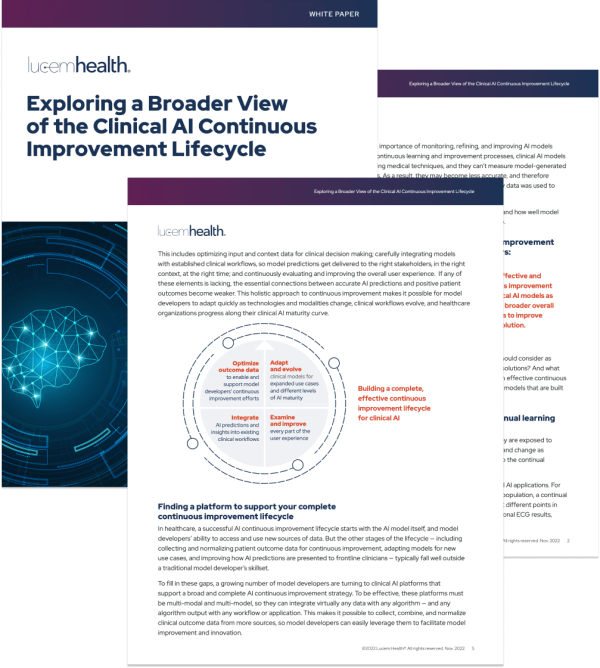Exploring a Broader View of the Clinical AI Continuous Improvement Lifecycle

LUCEM HEALTH WHITE PAPER
Framing your thinking for the continuous improvement lifecycle
Every clinical AI developer understands the importance of monitoring, refining, and improving AI models after they’re deployed. Without effective continuous learning and improvement processes, clinical AI models can’t adapt to new sources of data or evolving medical techniques, and they can’t measure model-generated predictions against actual patient outcomes. As a result, they may become less accurate, and therefore less effective, over time — no matter how sound the models or how much high — quality data was used to train them initially.
This white paper highlights solutions for the main hurdles associated with implementing a continuous improvement lifecycle, such as: